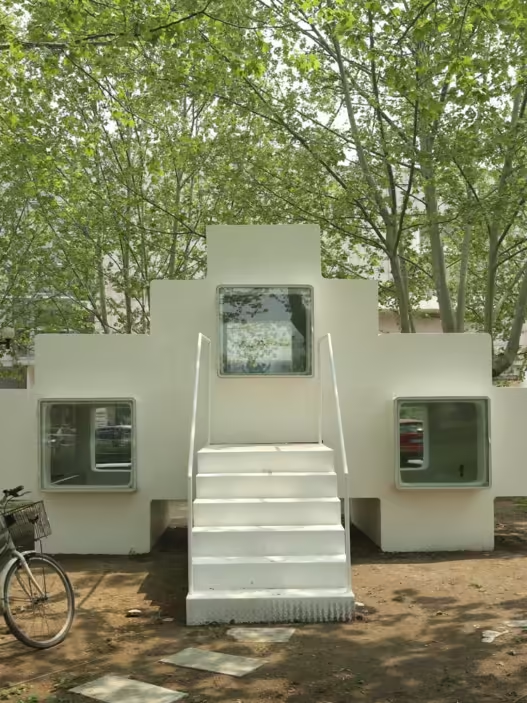Shining at the pinnacle of modern architecture with its slender and elegant lines, it is not just a skyscraper, but a magnificent fusion of human engineering and aesthetics.
Beyond being the tallest building in the world, Burj Khalifa’s architecture is the product of a profound process of thought and design. Pushing boundaries with its height, it is equally impressive with its architecture. Designed by the architectural firm SOM (Skidmore, Owings & Merrill), best known for the work of Spanish architect Santiago Calatrava, it is a masterpiece that captures the essence of modern architecture.
The architectural subtleties of the Burj Khalifa are evident in its exterior, covered in curved glass panels, an homage to the desert landscape and Arab architecture. The shape of the building offers a modern interpretation of traditional Islamic motifs, while its curved lines are a prime example of advanced engineering techniques.
Burj Khalifa’s architectural subtleties are more than just an aesthetic spectacle. The durability of the structure, its ability to cope with environmental impacts and the comfort it offers to human life represent the highest standards of modern architecture and engineering.
Let’s take a look at this magnificent structure.

- It is the vision of Sheikh Mohammed bin Rashid Al Maktoum and the development of Emaar Properties.
- The architectural design was realized by Skidmore, Owings & Merrill.
- Construction of the building began in 2004 and was completed in 2010.
- The building utilizes a unique structural system consisting of a combination of a concrete core and a steel frame.
- The construction process was complex and meticulous.
- Wind and structural stability challenges were overcome with innovative solutions.
- The interior and exterior design of Burj Khalifa provides a balance between modernity and tradition.
- The sustainability and energy efficiency of the building is supported by various measures.
- Burj Khalifa is a groundbreaking achievement in the fields of tourism, economy and architecture.
History and Development of Burj Khalifa
Concept and Design
Located in Dubai, United Arab Emirates, Burj Khalifa is an architectural marvel and holds the title of the tallest building in the world. The idea for this iconic structure was born from the vision of Sheikh Mohammed bin Rashid Al Maktoum, the ruler of Dubai. The project was developed by Emaar Properties, a leading real estate development company.
Burj Khalifa was designed by Chicago-based architecture firm Skidmore, Owings & Merrill (SOM). Lead architect Adrian Smith worked with his team to develop a design that is not only visually striking but also structurally sound. Inspired by Islamic architecture, the design features a stepped and tapering design reminiscent of stalagmites.


Construction of the Burj Khalifa began in 2004 and was completed in 2010 and officially opened on January 4, 2010. The project was a collaboration between various international consultants, contractors and engineers who worked together to bring this architectural masterpiece to life.
Construction and Engineering of Burj Khalifa
Structural Design and Materials
Burj Khalifa stands at a staggering height of 828 meters (2,717 feet) and consists of 163 floors. The construction of such a tall building required innovative engineering techniques and state-of-the-art materials. Burj Khalifa’s structural system is a combination of a central concrete core and an external steel frame.
The building’s core provides the primary structural support, housing elevators, stairs and other essential services. It is constructed using high-strength reinforced concrete and is designed to withstand wind and seismic forces. An external steel frame, known as a “Y-tower” structure, provides additional support and stability to the building.
Construction Process
The process of building the Burj Khalifa was complex and meticulous. It involved the use of advanced construction techniques and the coordination of thousands of workers and specialized equipment. The construction timeline can be divided into several phases:
- Site Preparation: Located in the heart of Dubai, the construction site was prepared by clearing the site and digging the foundation.
- Foundation and Piles: To support the enormous weight of the building, a deep foundation system was implemented. A total of 192 piles, each 1.5 meters in diameter, were driven into the ground to a depth of over 50 meters.
- Concrete Works: The construction of the concrete core involved the continuous pouring of high-strength concrete using a specially designed pumping system. The concrete was pumped vertically at a rate of approximately one floor per week.
- Steel Frame Erection: The steel frame, consisting of prefabricated steel sections, was erected around the concrete core. The steel sections were lifted into place using cranes and then bolted together.
- Cladding and Interior Fittings: The exterior of Burj Khalifa is adorned with a curtain wall system of reflective glass panels. The cladding process involved the installation of more than 26,000 glass panels carefully designed to provide thermal insulation and withstand extreme weather conditions. The interior fit-out included the installation of mechanical, electrical and plumbing systems, as well as finishing touches to the floors, walls and ceilings.
Challenges and Innovations
Wind and Structural Stability
One of the key challenges faced during the construction of Burj Khalifa was the ability of the structure to withstand high wind forces. The unique design of the building, with its tapering shape and setbacks, helped to reduce wind loads by disrupting the airflow around the structure. In addition, a tuned mass-damping system was installed at the top of the building to prevent wind-induced swaying.
Vertical Transportation
With its enormous height, providing efficient vertical transportation was a significant challenge. Burj Khalifa has one of the world’s fastest elevators, capable of moving at 10 meters per second (33 feet per second). The elevators have a double-deck design, allowing for greater capacity and efficient movement of people through the building.


Sustainability and Energy Efficiency
Burj Khalifa incorporates several sustainable design features to minimize its environmental impact. The building utilizes a condensate collection system that captures and recycles water from air conditioning units for irrigation purposes. It also features a high-performance glass curtain wall that helps reduce solar heat gain and improves energy efficiency. Burj Khalifa has also implemented energy saving measures such as efficient lighting systems and occupancy sensors to reduce energy consumption.
Architectural Design and Features of Burj Khalifa
Exterior Design and Materials
Located in Dubai, United Arab Emirates, Burj Khalifa is famous for its iconic exterior design and use of state-of-the-art materials. The architectural design of Burj Khalifa is a fusion of Islamic and modern influences, creating a distinctive and visually striking structure.
Design Inspiration and Concept
The design of Burj Khalifa was inspired by traditional Islamic architecture, particularly the geometric patterns found in Islamic art and the shape of the Hymenocallis flower. The concept behind the design was to create a soaring tower that embodies both cultural heritage and technological innovation.
Structural Design
Burj Khalifa has a unique structural design that enables it to withstand Dubai’s extreme weather conditions, including high winds and seismic activity. The building’s design incorporates a buttressed core system, where the central core is reinforced by a series of wings or struts that extend outward, providing additional stability.


External Materials
The exterior of Burj Khalifa showcases a combination of materials that contribute to its distinctive appearance and durability. The main materials used in the construction of the facade are:
- Stainless Steel: The stainless steel cladding covering the exterior of Burj Khalifa gives the building a sleek and modern look. The stainless steel panels not only enhance the visual appeal, but also provide protection against corrosion and weathering.
- Reflective Glass: Burj Khalifa is adorned with reflective glass panels that provide stunning views of the surrounding cityscape. The glass panels also help reduce solar heat gain, contributing to the building’s energy efficiency.
- Aluminum and Teflon Coating: Burj Khalifa’s towering spire is constructed using aluminum and coated with Teflon. This combination of materials provides resistance to harsh climatic conditions and ensures the longevity of the structure.
Burj Khalifa Interior Design and Layout
The interior design and layout of Burç Khalifa is as impressive as its exterior. Every aspect of the interior has been meticulously planned to create an environment of luxury and sophistication.
Design Features
The interior design of Burj Khalifa includes a mix of contemporary and traditional elements that reflect the cultural heritage of the region. Some key design features include:
- High-End Finishes: Burj Khalifa’s interiors feature premium finishes such as marble, gold accents and intricate detailing. These finishes add to the rich ambience of the building.
- Open Floor Plans: Burj Khalifa offers open floor plans that maximize natural light and offer unobstructed views of the city. Spacious interiors create a sense of freedom and elegance.
- Art Installations: Burj Khalifa’s interiors showcase carefully curated art installations, including sculptures and paintings, adding to the overall aesthetic appeal and cultural experience.


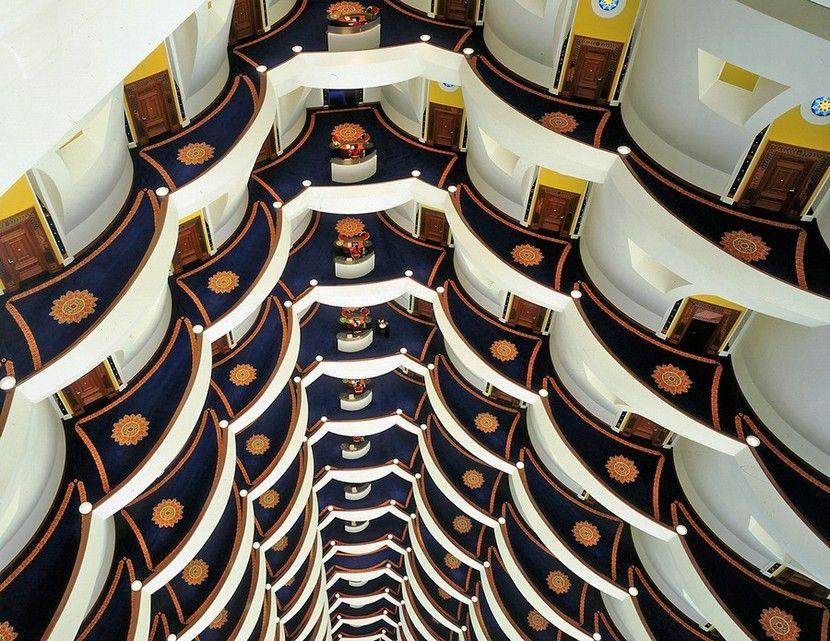
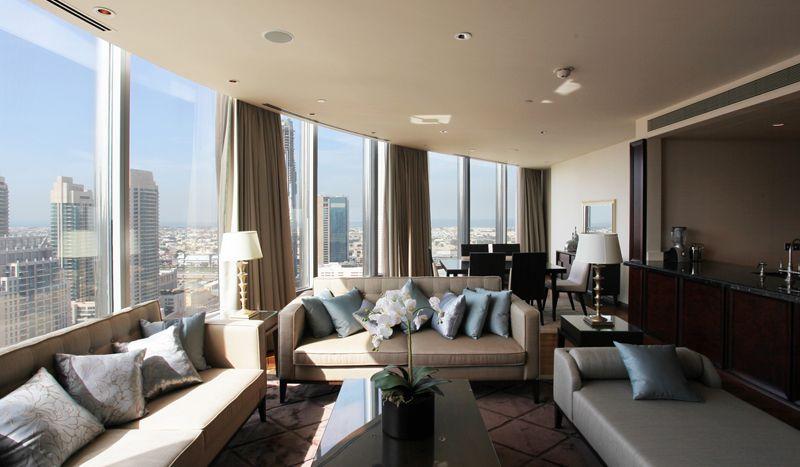
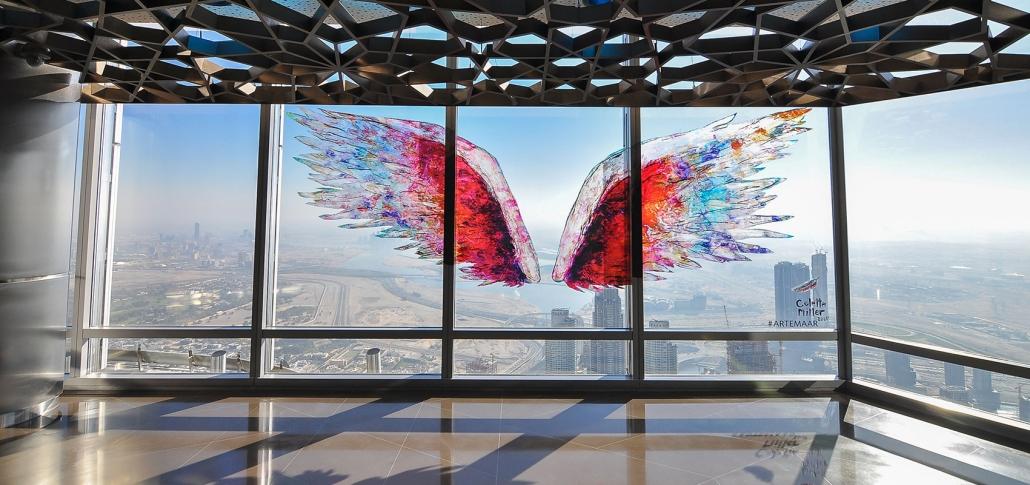
Organization and Functionality
Burj Khalifa houses a mix of residential, commercial and hospitality spaces. The layout is designed to provide functionality and convenience for building occupants. The building consists of several floors dedicated to different purposes, including luxury residential apartments, upscale restaurants and lounges, corporate offices and a hotel.
Sustainability and Energy Efficiency
Burj Khalifa is not only an architectural marvel, but also embodies sustainable design principles and energy-efficient features.
Sustainable Design
Burj Khalifa employs a variety of sustainable design strategies, including
- Efficient Cooling Systems: The building uses an efficient district cooling system that reduces energy consumption for air conditioning.
- Water Conservation: Burj Khalifa has implemented water-saving technologies such as low-flow fixtures and a grey water recycling system to minimize water usage.
- Renewable Energy: The building incorporates solar panels to harness renewable energy and reduce dependence on traditional power sources.
Energy Efficiency
Burj Khalifa prioritizes energy efficiency through various measures:
- Insulation: The building’s exterior cladding and high-performance glazing help minimize heat gain and heat loss, reducing the need for excessive cooling or heating.
- LED Lighting: Burj Khalifa uses energy-efficient LED lighting indoors and outdoors, significantly reducing electricity consumption.
- Intelligent Building Systems: Burj Khalifa employs advanced building management systems that optimize energy use, monitor environmental conditions and maximize operational efficiency.
Location and Context of Burj Khalifa
Dubai, United Arab Emirates
Dubai is a city in the United Arab Emirates (UAE), located on the southeast coast of the Arabian Peninsula. It is the largest and most populous city in the UAE and is known for its striking skyline, luxurious lifestyle and vibrant culture. Dubai is a global center of tourism, trade and finance, attracting millions of visitors from around the world each year.
Urban Planning and Development
Dubai has undergone a rapid process of urban planning and development over the last few decades, transforming into a modern metropolis. The city’s urban planning focuses on creating a well-designed, sustainable and efficient urban environment for its residents and visitors.
The Dubai government has implemented various initiatives and projects to shape the city’s urban landscape. The Dubai Plan 2021, for example, outlines the city’s vision for sustainable development and urban growth. It emphasizes the importance of creating a cohesive and inclusive society, promoting economic prosperity and preserving the city’s cultural heritage.
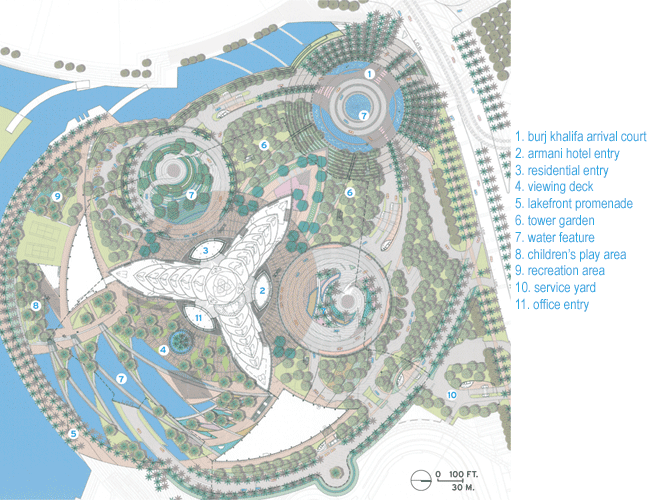
A key element of Dubai’s urban planning is the development of iconic architectural landmarks. The city is famous for its innovative and futuristic skyscrapers, such as the Burj Khalifa, the tallest building in the world. These architectural wonders not only contribute to the city’s skyline, but also serve as landmarks and tourist attractions.
Cultural and Economic Importance
Dubai’s unique cultural mix and strategic location have contributed to its cultural and economic importance. The city is a melting pot of different nationalities, with a diverse population contributing to its multicultural fabric. Dubai society embraces cultural diversity and promotes tolerance and understanding among its residents.
From an economic perspective, Dubai is a major global business center. It has positioned itself as a center for trade, finance and tourism in the Middle East. The city offers a favorable business environment with tax incentives, world-class infrastructure and a strong legal framework. Dubai’s economy is diversified with key sectors including real estate, tourism, finance, logistics and retail.
Dubai’s strategic location plays a crucial role in its economic success. It serves as a gateway between East and West, connecting markets in Asia, Europe and Africa. The city’s world-class transportation infrastructure, including a modern airport and a major port, facilitates trade and enables businesses to operate efficiently.
Furthermore, Dubai’s commitment to hosting major international events and exhibitions has further enhanced its global reputation. The city has successfully hosted events such as Expo 2020, attracting millions of visitors and demonstrating its ability to host large-scale international meetings.
Burj Khalifa’s Records and Achievements
The Tallest Building in the World
The Burj Khalifa in Dubai has the prestigious title of being the tallest building in the world. With a height of 828 meters (2,717 feet), Burj Khalifa surpasses all other structures, breaking numerous records in the process. The impressive height of the Burj Khalifa is a testament to the engineering marvels performed during its construction.
Highest Occupied Floor
Burj Khalifa is not only the tallest building, it also has the highest floor in the world. The highest floor accessible to the public is the observation deck on the 148th floor, known as “At The Top, Burj Khalifa Sky”. From this vantage point, at a staggering height of 555 meters (1,821 feet), visitors can experience breathtaking panoramic views of Dubai and beyond.

Highest Outdoor Observation Deck
In addition to having the highest floor, Burj Khalifa is also home to the world’s highest open-air observation deck. Known as “At The Top, Burj Khalifa”, the observation deck is located on the 124th floor and offers visitors spectacular views of the city. At a height of approximately 452 meters (1,483 feet), visitors can enjoy stunning views and take unforgettable photos.
The World’s Longest Traveling Elevator
Burj Khalifa is also home to another impressive record: the world’s longest traveling elevator. Developed by Otis, the elevator travels an extraordinary distance of 504 meters (1,654 feet) from the ground floor to the observation deck on the 148th floor. The elevator offers visitors a fast and efficient ride to the top, allowing them to experience the awe-inspiring heights of the Burj Khalifa.
Criticisms and Controversies of Burj Khalifa
Environmental Concerns
The construction of Burj Khalifa has not been without criticism and controversy, particularly in terms of its environmental impact. Critics argue that the huge amount of resources and energy required to build and maintain such a tall structure contributes to carbon emissions and environmental degradation. The construction process involves the intensive use of concrete, which has a significant carbon footprint due to the production of cement. In addition, the building’s energy consumption, including air conditioning and lighting, has also raised concerns about sustainability.
However, it is worth noting that efforts have been made to reduce the environmental impact of Burj Khalifa. The building has implemented several sustainable features such as a condensate water recovery system, solar panels and high-performance glazing that help reduce energy consumption. Burj Khalifa is also LEED (Leadership in Energy and Environmental Design) certified, demonstrating its commitment to environmentally friendly practices.
Labor Rights Issues
Another area of criticism surrounding the Burj Khalifa concerns labor rights issues. The rapid construction of the building required a significant workforce, predominantly composed of migrant workers from various countries. Reports have highlighted concerns about the working conditions and treatment of these workers, including allegations of low wages, long working hours, inadequate safety measures and restrictions on worker mobility.
In response to these criticisms, the Dubai government has introduced labor reforms and initiatives to improve worker conditions across the construction sector. These include the introduction of the Wage Protection System, increased labor inspections and stricter enforcement of labor regulations. While progress has been made, continued efforts are needed to ensure that workers’ rights and welfare are protected.
Ethical considerations
The development and operation of the Burj Khalifa has raised ethical issues of wealth inequality and social disparities. The building stands as a symbol of wealth and luxury in a city known for sharp wealth contrasts. Critics argue that the resources spent on the construction of such a spectacular structure could be better used to address social and economic problems in society.
It is important to recognize that the Burj Khalifa has also contributed to Dubai’s economic growth and development. The influx of tourism and investment resulting from the iconic structure has created jobs and revitalized various sectors of the economy.
Burj Khalifa’s Impact and Legacy
Tourism and Economic Growth
The Burj Khalifa has had a significant impact on tourism and economic growth in Dubai. Since its completion, the iconic structure has become a major tourist attraction, drawing visitors from around the world. The observation decks offer breathtaking views of the city skyline, the Arabian Gulf and the surrounding desert. The presence of the Burj Khalifa has helped position Dubai as a global tourist destination, attracting millions of visitors each year.
The construction of Burj Khalifa has also stimulated economic growth and development in Dubai. The project has created numerous job opportunities both directly and indirectly, from construction workers to professionals in the hospitality, retail and tourism sectors. Increased tourism and investment due to Burj Khalifa has revitalized various sectors and contributed to the city’s overall economic prosperity.
Inspiration for Future Architecture
Burj Khalifa has been an inspiration for architects and engineers around the world. Its innovative design and engineering skills have pushed the boundaries of what is possible in skyscraper construction. The successful realization of such a tall and structurally complex building inspired the development of new technologies and techniques in architecture.
Burj Khalifa’s unique design, with its Y-shaped floor plan and tapering silhouette, influenced the aesthetics of subsequent skyscrapers. The architects were inspired by Burj Khalifa’s sleek lines, elegant proportions and integration of sustainability features. Lessons learned from the construction and operation of Burj Khalifa have contributed to advances in tall building design and engineering.
Symbolism and Cultural Significance
Beyond its architectural and economic impact, Burj Khalifa has deep symbolism and cultural significance for the people of Dubai and the United Arab Emirates. The building stands as a symbol of the city’s ambition, prosperity and modernity. It represents the vision and determination of Dubai’s leaders to transform the city into a global center for business, tourism and innovation.
Burj Khalifa also reflects the cultural heritage of Dubai and the UAE. Its design incorporates elements inspired by traditional Islamic architecture, such as repeating geometric patterns and intricate details. The building’s observation decks offer visitors a unique opportunity to appreciate the city’s skyline, blending modern skyscrapers with historic landmarks such as Dubai Creek and the Al Fahidi Historic District.
Conclusion
Burj Khalifa is a testament to human innovation, architectural ingenuity and the ambitious spirit of Dubai. Its impact and legacy span a variety of aspects, from tourism and economic growth to inspiring future architectural and cultural significance.
Throughout its existence, Burj Khalifa has attracted millions of tourists, positioning Dubai as a global tourist destination and contributing to the city’s economic growth. The construction of Burj Khalifa has created jobs and revitalized various industries, further boosting Dubai’s prosperity.
The Burj Khalifa also inspired architects and engineers around the world with its groundbreaking design and engineering features. Its influence can be seen in the aesthetics and technological advances of subsequent skyscrapers. The lessons learned from its construction have pushed the boundaries of what is possible in tall building design.
Burj Khalifa has deep symbolism and cultural significance for Dubai and the UAE, representing the city’s ambition, prosperity and cultural heritage. The integration of traditional Islamic architectural elements showcases the fusion of modernity and tradition.
Burj Khalifa is a sustainable building designed to minimize its environmental impact. The building has several energy-saving features:
- The use of a double-skinned façade that helps reduce heat gain and glare,
- Collection of rainwater for irrigation and cooling through a rainwater harvesting system,
- A wind turbine and solar panel array generating electricity.
In addition, Burj Khalifa has the following sustainable features:
- A green roof that improves air quality and reduces the urban heat island effect,
- A recycling program that encourages tenants to recycle their waste,
- A water conservation program to reduce water use.
Burj Khalifa is a leading example of sustainable architecture and has been recognized by various organizations such as the United Nations Environment Programme (UNEP) and the World Green Building Council (WGBC).
In 2010, Burj Khalifa was awarded LEED Gold Certification by the USGBC, making it the world’s tallest LEED-certified building. It has also received high ratings, such as the Estidama Pearl five-star rating awarded by the Abu Dhabi government.
Burj Khalifa is a testament to the UAE’s commitment to sustainability and its leadership in the development of sustainable buildings. It is an inspiration for other countries and cities and demonstrates the potential of sustainable architecture.
Burj Khalifa has received many awards and recognitions for its architectural design, engineering and sustainability. Some of them include:
- Emporis Skyscraper Award (2010),
- Council on Tall Buildings and Urban Habitat (CTBUH) Best Tall Building Award (2010),
- Structural Engineering Society of America (SEI) Outstanding Civil Engineering Achievement Award (2010),
- American Institute of Architects (AIA) Institute Architecture Honor Award (2011),
- Aga Khan Architecture Award (2012).
In 2011, it was awarded LEED Gold Certification by the US Green Building Council.
Burj Khalifa is a significant achievement in architectural design, engineering and sustainability and is a testament to human ingenuity.
Visitors can tour the Burj Khalifa in elevators that can take them to the 124th floor, which offers panoramic views of Dubai. The building also features a number of restaurants, bars and shopping centers. Burj Khalifa is located in downtown Dubai and the nearest metro station is Burj Khalifa/Dubai Mall. Tour prices start from AED 125 for adults and AED 95 for children and tickets can be purchased online or at the Burj Khalifa Ticket Office. Visiting hours for the building are from 8:30 to 12:00 every day of the week.
Frequently Asked Questions About Burj Khalifa
- What is Burj Khalifa and where was it built?
- Burj Khalifa is an iconic skyscraper in Dubai, United Arab Emirates (UAE). It is famous for being the tallest building in the world.
- Who developed the concept of Burj Khalifa?
- The concept of Burj Khalifa was born from the vision of Sheikh Mohammed bin Rashid Al Maktoum, ruler of Dubai. The project was developed by leading real estate development company Emaar Properties.
- Which architecture firm designed Burj Khalifa?
- Burj Khalifa was designed by Chicago-based architecture firm Skidmore, Owings & Merrill (SOM), with Adrian Smith serving as lead architect.
- When did the construction of Burj Khalifa start and finish?
- Construction of the Burj Khalifa began in 2004 and was completed in 2010. The official opening took place on January 4, 2010.
- What is the building system of Burj Khalifa?
- Burj Khalifa’s structural system consists of a central reinforced concrete core combined with an external steel frame, known as a “Y-tower” structure, which provides additional support and stability to the building.
- How high is Burj Khalifa and how many floors?
- Burj Khalifa stands at a staggering height of 828 meters (2,717 feet) and has 163 floors.
- What were some of the challenges faced during the construction of Burj Khalifa?
- One of the key challenges was ensuring the building’s ability to withstand high wind forces, which was solved by its unique design and the addition of a mass damping system set at the top to reduce swaying.
- What are the main features of Burj Khalifa’s interior design?
- Burj Khalifa’s interior design combines contemporary and traditional elements, offering luxurious finishes such as marble, gold details and intricate detailing. Open floor plans maximize natural light and offer panoramic views of the city.
- How does Burj Khalifa contribute to sustainability and energy efficiency?
- Burj Khalifa combines a variety of sustainable design features, including efficient cooling systems, water-saving technologies, renewable energy sources such as solar panels, and high-performance building materials to minimize environmental impact and improve energy efficiency.
- What are some of Burj Khalifa’s key records and achievements?
- Burj Khalifa holds many records, including being the tallest building and having the highest outdoor observation deck. It has received numerous awards for its architectural design, engineering and sustainability efforts, cementing its status as a global landmark.
My Thoughts About Burj Khalifa
The Burj Khalifa is widely admired around the world as one of the greatest achievements of modern architecture. Soaring high into the sky, Dubai’s magnificent tower is an engineering marvel that pushes the boundaries of humanity. At 828 meters high, it is not just a building, but a symbol of human ambition, courage and creativity.
This tower serves not only as a structure, but also as a symbol and a monument. For past and future generations, it bears a sign of how far humanity can go. Not only the physical size of the Burj Khalifa should be appreciated, but also its aesthetic beauty and environmentally conscious design.
This magnificent structure is a source of pride not only for Dubai but for the whole world. It will forever be remembered and admired as an example of how far the limits for humanity can be pushed. The Burj Khalifa stands as a monument to celebrate the infinite potential and creativity of humanity.
If you haven’t read it yet, you can also check out our review of the Basilica Cistern – The Sunken History…
Architect: Adrian Smith (Skidmore, Owings & Merrill)
Architectural Style: Modern and High-Tech
Year: 2004-2010
Location: Dubai, UAE
Discover more from Dök Architecture
Subscribe to get the latest posts sent to your email.
















